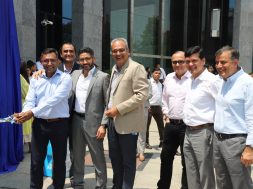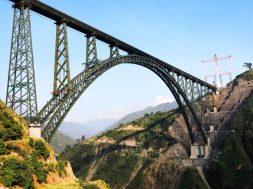Concrete Industry Demands Standardisation [Apr 2012]
In a rapidly growing economy, the contribution of concrete is highly appreciated. Experts talk about the necessary modifications required for taking the country to the next level. A brief analysis by Relin Hedly
Concrete is the most commonly used and preferred construction material and most of the infrastructure of modern civilisation has been built using concrete. It has contributed to the built environment immensely.
Present StatusThe construction industry plays a significant role in the economy of a country and a conduit for a substantial part of its development. However, per capita consumption of concrete in India is far lower than that of the countries like China. India uses just 5 -7 kgs of cement while China uses 54 kgs of cement. The consumption of concrete is scarce or scattered in the rural areas in comparison to urban areas. Experts feel, as far as awareness is concerned a lot needs to be done in terms of increasing the consumption of concrete in the rural areas. This is where the Indian Concrete Institute (ICI) comes into the picture that takes a lot of initiatives in the form of increasing awareness, training courses to rural people etc. “The reason why developed countries are growing fast is because it has very good infrastructure and with that if good roads are there the transportation of material and services becomes faster which in turn adds to the financial gain for the country”, said Narendra Patel, Chairman, Indian Concrete Institute on the sideline of Concrete Show India 2012 conference recently held in Mumbai.
Major HurdlesHighlighting the growth drivers for the concrete industry in India, Mr. Patel said, “Lot of encouragement from our government for putting up more and more cement plants are required. Unfortunately the local residents and judiciaries are not in favour as setting up of cement plants need huge areas”. For e.g. more than 400 – 500 acres of land is required for acquiring mines. On the other hand, citing the examples of opposing Nirma cement plant in Gujarat, he said that increasing public dissents is also a major hurdle in setting-up plants. “Nirma wanted to set up a plant in Gujarat, lot of people were opposed to it otherwise it would have been a very good deposit and we could have had a good cement plant. Andhra Pradesh is next where limestone is available wherein cement can be produced. But again owing to public opposition the project faced a major setback”, he said.
A look at the current scenario reveals that the cement industry is going through a difficult phase because of land acquisition and illegal mining issues. For development of a country, the consumption of cement needs to be increased which will help in developing the infrastructure. In other words, lot of infrastructure is required for the growth of the country. Change in the mindset of politicians, public and judiciary is required to see that all the development projects are taken up. Further migration of people from rural areas into cities is on the rise leaving limited scope for development in cities. This is one reason high-rise buildings are required. “The Government is putting lot of restriction on high-rise buildings in the form of different kind of controls. We don’t mind the control but it should be a rational one”, adds, Mr. Patel.
In order to deal with different adversities, Mr. Patel suggests, “We have to create a political consensus to deal as engineers are not ready to help with solutions. For instance in the precast industry, creating mass-housing, pre-casting is required that give fast and durable solutions. However, the problem lies in the taxation, excise duty, railway tax etc. etc. which accounts to an additional 25 per cent. Therefore no technology can survive”.
Needs StandardisationThere are lots of changes taking place in the concrete industry making way for new technologies. Talking about the acceptance of these technologies, Dr. A Ramakrishna, Former MD, L&T, ECC division said, “The acceptance is good but the government officials have to change their policies. We are still following age old methods. For example the modern methods of pre-cast concrete has not yet found acceptance in the public sector”.
Experts also recommend change and modifications in the code of practice. Additionally, change in the mindset of what is right and wrong is required. “We should take lessons from other countries; some kind of standardisation is required for the public sector”, Dr. Ramakrishna points out.
The concrete industry has also been taking certain steps however until the government policies change, they are not competitive. “The new technologies such as pre-cast are not competitive as the material is the same and cost is high however the method of doing it is expensive for moulds and erection but overall it will be mechanical provided there is not too much taxation like excise duties, sales tax etc. Unless there is assured business for long term it will not be accepted. If the taxation is more for one kind of construction method which is good, then there is no progress in that direction. We are still using labour intensive methods. All the government estimates are based on that”, Dr. Ramakrishna adds.
Looking towards Budget The concrete industry is also suffering because of unskilled labour not being trained. With the Union Budget 2012 round the corner the concrete industry demands R&D status for the training. Also incentive for training and few other policy reforms are expected from the upcoming budget.
Cookie Consent
We use cookies to personalize your experience. By continuing to visit this website you agree to our Terms & Conditions, Privacy Policy and Cookie Policy.









